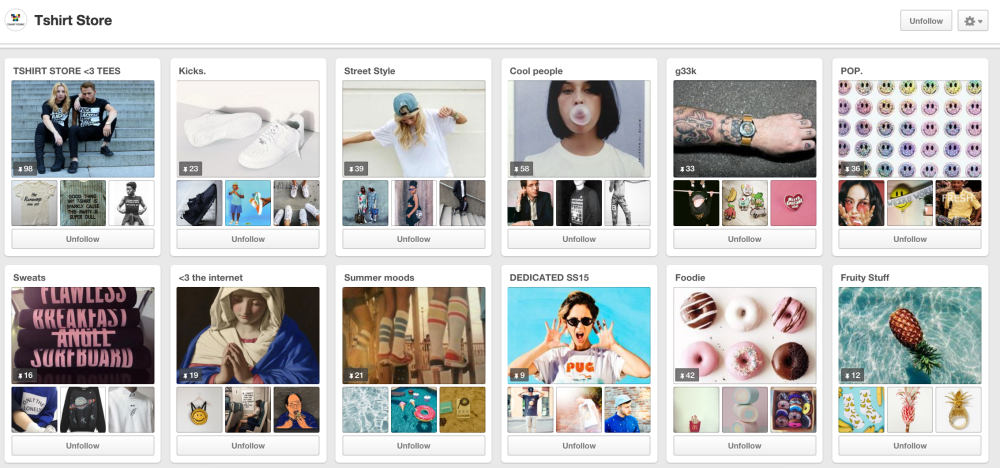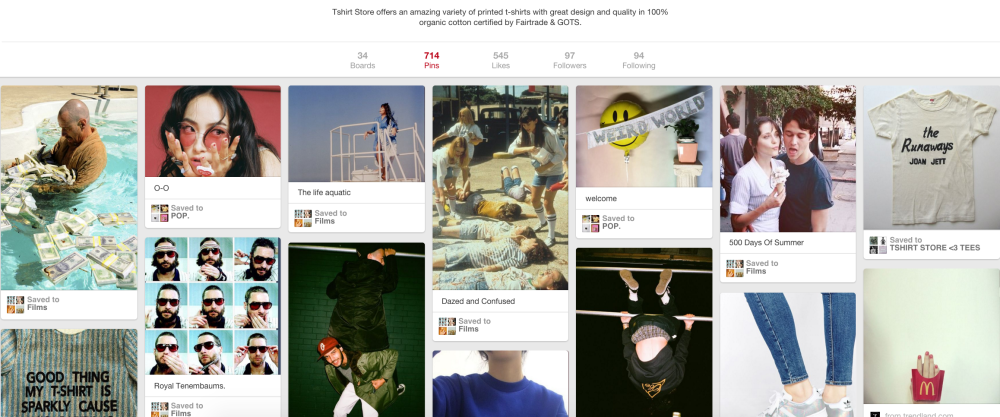The Pinterest Content Strategy
A long, long time ago I blogged that I would put together a Pinterest strategy and here it finally is! This post is mainly about the content of your Pinterest account; the what’s, when’s and why’s so to speak and not much about the promoted pins. Not at all actually but here we go!
So, you got the basics done. You have setup an account, verified your business and maybe even created a few boards. Now what? First – take a moment to think about your business. What are you selling?
69% of online consumers who visit Pinterest have an intention of doing some online shopping too. That said, you need to see this as an opportunity to create brand awareness and the ability for customers to browse and get inspired on a massive scale. It’s your online store front for potential customers, browsing to buy.
Pinterest is a fantastic medium to really express what your brand is about but this also means that you need to be able to visualize the products you’re selling. That does not mean pinning product pictures from your online shop. Instead, you should target your potential customer’s interest surrounding your product. Create boards that focus on a specific theme that is related to your brand, and in a context that inspires people.
Below is two screenshots of Tshirt Store‘s Pinterest page and I thought we’d go through it a bit. (Disclaimer: I manage this page).
Tshirt Store’s Pinterest has got a lot of boards, above is just a few of them. All boards are created with inspiration from the collections that we’re currently selling in stores and online, including all our brands, artists and collaborations. “Fruity Stuff” is a reference to a popular pineapple print we sold last season, and “POP” mostly consists of different Smiley/emoji references – and Smiley is one of our collaborations. We pin our own products from our site, but we also cross-post re-pins and posts with our other social accounts to share inspiration. A very important note is that you always need to credit the original pinner/url, that’s just good manners.
Tshirts (and some streetwear) are our main online business of course but we’re not posting our product pictures, or even our own brand imagery. We are adding some of our own content, pinned from the online shop, but mostly we’re repinning other content with witty, young, pop-culture references that correlate with what we are selling/and producing ourself. Basically, we are pinning what we want to be. By putting ourself in that context, it associated our own products with the same.
Other things you can try
- Create a collaborative board with your fellow pinners
- Pin to Win contest with a unique hashtag that you can use in all social channels
- Gift Guides and Holiday Guides through themed boards. Inspiration for wishlists!
- Promote contests encouraging pinners to pin products from your site
To conclude: Pinterest should be easy and fun. The frequency is not as important as with other channels, but be consistent and don’t do excessive pinning all at once. Start out small and see what works for your specific brand. Measure the amount of traffic, time spent on page(s) and conversions on your page. Keep in mind that all the images you pin from your own channels should have relevant alt-tags (including your brand, product name and/or product category) and of course a good landing-page to strengthen your SEO. If you upload images through Pinterest – name them properly.

